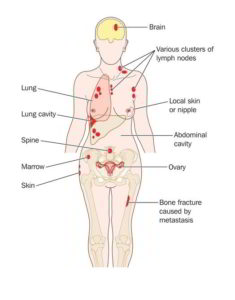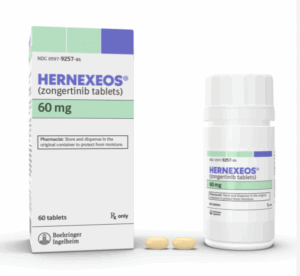When was it reported?
The outcome of the phase II, multicenter, open-label, single-arm DESTINY-Breast trial was reported at the 2019 San Antonio Breast Cancer Symposium, SABCS, from December 10 – 14.
Trastuzumab Deruxtecan, DS-8201,has demonstrated durable objective responses in patients with HER2-positive breast cancer who were HEAVILY PRETREATED, including with Kadcyla and other HER2-targeted treatments.
The problem
HER2-directed therapies, including Perjeta, Herceptin, and Kadcyla, have resulted in improved patient outcomes among those with HER2-positive, advanced breast cancer. However, the development of drug resistance is almost inevitable and there is no formal standard of care for patients once this happens. This highlights a clear, unmet medical need for novel, improved therapies for this patient population.
About the study
253 patients with metastatic HER2-positive breast cancer previously treated with Kadcyla participated in the trial. 184 patients received the recommended phase II dose and the overall shrinkage was 60.9%, of which 6% complete remission!.
Median time until disease progression under the DS-8201 treatment was 16.4 months!
97% of the 184 patients experienced stopping disease growth. This suggests that most cancers found in this population are sensitive to this drug.
A limitation of the study was that it was a single-arm trial and therefore it was not possible to determine whether Trastuzumab Deruxtecan, DS-8201, is more effective than other therapies.
The FDA granted “breakthrough therapy designation” to Trastuzumab Deruxtecan, DS-8201, prior to its final approvel.
Adverse events
99% of patients suffered from adverse events, including decreased neutrophil count, nausea, anemia, decreased lymphocyte count and fatigue. 15% of patients discontinued treatment because of adverse events. Interstitial lung disease, ILD, was observed in 25 patients and there were 4 deaths related to it. If diagnosed, discontinuation or lowering of dosage of the drug is needed and prompt intervention with steroids is recommended.
The best treatment for a cancer patient is to get the most advanced cancer drugs in advanced stages of development. There, the hope and the chance to extend life go far beyond the standard protocols.
Contact us to find out what is the best treatment for YOU
TRIAL•IN Pharma
Do not give up on life!
Contact us 24/7 for free service matching:
Call center +44.2082.426.039



















